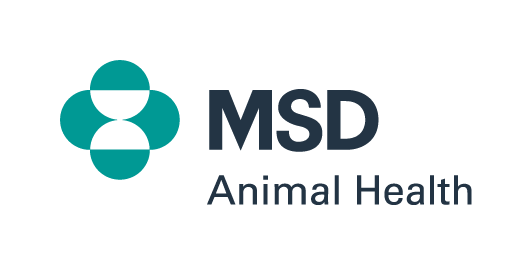
Dry Eye
A page about canine dry eye describing cause, clinical signs, diagnosis and control.

Introduction
Keratoconjunctivitis sicca (KCS), commonly referred to as “Dry Eye”, is one of the most common dog eye problems. Dry Eye affects approximately 1 in 22 of all dogs in Ireland.

Aetiology
Dry Eye is caused by destruction of the tear glands by your dog’s own immune system. This means that too few natural tears are produced. Damage to the tear glands is irreversible. If left untreated, eventually the tear glands are completely destroyed and your dog loses the ability to produce tears. Dry Eye is a painful condition, and ultimately leads to permanent blindness.
Natural tears have many important functions which are lost in Dry Eye; they carry vital nutrients and oxygen, lubricate and cleanse the eye, and help protect against infection. Without tears, the eye becomes very dry and uncomfortable. Conjunctivitis, eye infections and ulcers become more common and discharge may be seen from the eyes. New blood vessels start to grow on the surface of the eye and dark pigmentation may develop. Eventually these changes lead to permanent blindness. It is very important to diagnose Dry Eye early, before these undesirable changes become severe and much of the tear tissue is destroyed.
It is important to recognise that in the vast majority of cases, Dry Eye is a lifelong condition and requires lifelong treatment. If not treated correctly, your dog will experience discomfort and the disease will affect sight and welfare long term.
Epidemiology
Dry eye, also known as KCS (Keratoconjunctivitis Sicca) can affect all breeds at any age, so it is important to be aware of the signs to look out for.
Dry Eye is very common – 1 in 22 dogs are affected by this disease. However, in certain breeds, this figure is almost doubled. It’s important to be aware that the eyes of some dogs affected by Dry Eye look surprisingly normal, despite severely reduced tear production and destruction of the tear glands. The sooner Dry Eye is diagnosed and the correct treatment started, the better the long term outlook for your dog’s eyes. Dry Eye is also painful (a bit like having grit in your eyes) so prompt treatment will also improve your dog’s welfare.
Predisposed Breeds
All breeds of dogs can develop Dry Eye at any age, but some are more prone to the condition. Breeds of dog particularly susceptible to Dry Eye include:
English Cocker Spaniel
West Highland White Terrier
Cavalier King Charles Spaniel
Shih-Tzu
Other breeds include the Yorkshire Terrier, Bulldog, Pekingese, Pug and Lhasa Apso.
Specialist ophthalmologists recommend testing susceptible breeds regularly and many owners elect to have their dog tested at routine appointments such as vaccination. This ensures they pick up Dry Eye early and can start treatment before too much tear gland tissue is destroyed.

Clinical Signs
The appearance of Dry Eye can be quite varied and can be subtle, especially early in the disease. It is better for the health of your dog’s eyes to pick up the problem early, so that more tear tissue remains and less changes to the eyes have developed. The earlier the problem is diagnosed and treated, the better the long term outlook for your dog’s eyes.
Specialist ophthalmologists recommend testing virtually all sore eyes for Dry Eye, to make sure the condition is diagnosed as early as possible.
If your dog has any of the following signs, you should make an appointment with your veterinary surgeon. Remember to tell your vet if your dog has experienced any previous eye problems. To give you an idea of how a dogs vision is impaired, an image is shown of a seaside vista and below it what the dog actually sees when disease starts to impact on corneal health.
Signs to look out for include:
Uncomfortable eyes – your dog may blink excessively, rub the eyes or hold the eyes closed
Eyes red and inflamed
Discharge from the eyes
Dry looking eyes
Frequent conjunctivitis, eye infections or corneal ulcers
Dark pigment on the surface of the eyes
Prominent blood vessels on the surface of the eyes
As dogs with Dry Eye are prone to getting eye infections and conjunctivitis, specialist ophthalmologists recommend testing for Dry Eye in all dogs with more than one infection in a 12 month period. Otherwise, Dry Eye could be missed and the dog only treated for the infection, and not the ongoing underlying problem.
A variety of stages of Dry Eye are shown below in order of increasing severity and chronicity.

 | The early stages of KCS |
 | Changes to the surface of the eye are becoming evident |
 | This eye has not been treated sufficiently early to ensure full recovery |
 | Significant damage to the eye surface – many of the changes in this case will not improve even after treatment |
 | Very advanced changes to the surface of the eye – irreversible |
Diagnosis
Diagnosis of Dry Eye is quick and simple – the test only takes 60 seconds. It is likely your vet will test most dogs with eye problems and also routinely test predisposed breeds.
Your vet measures your dog’s tear production using a Schirmer Tear Test. It is not uncomfortable for your dog and no sedation or anaesthetic is needed. A special strip of paper is placed in the eye, and tear production assessed. An enlarged image of the strip is demonstrated. The results are immediate.
Both eyes should be tested as the results are often quite different.
The results of the test are interpreted with other findings, such as clinical signs, to determine whether Dry Eye is present. If your dog has Dry Eye, they are not producing sufficient tears and should start treatment immediately.
Please ask your vet for further details on whats involved in the Schirmer Tear Test.

Control
With correct treatment, Dry Eye can be managed successfully long term. The sooner Dry Eye is diagnosed and correctly treated, the better the long-term outlook for your dog’s eyes and vision. As tears are made by the tear tissue, early treatment ensures sufficient tissue remains for your dog to be able to produce enough tears. Your dog will need treatment for the rest of its life to control tear gland destruction and prevent discomfort and undesirable changes to the eyes, including blindness.
Treatment for Dry Eye has two important aspects:
Control of the underlying destruction of the tear glands which we cannot see
Treating the effects on the eyes that we can see, such as redness and discharge
Your vet may prescribe an eye ointment containing the medication ciclosporin. This product is used to treat Dry Eye by over 99% of specialist ophthalmologists and has three important actions. It controls destruction of the tear glands, increases natural tear production and controls painful inflammation. It is the only product available that controls the underlying disease. The sooner the product is used, the better the long term result.
Although ciclosporin is an advanced and powerful agent, the product is formulated to be suitable for long term use.
Once treatment is started the appearance of the eyes should improve – this tells us the treatment is working and not that the disease has been ‘cured’. It is very important not to stop treatment at this stage, as the eyes will deteriorate again, causing your dog discomfort and resulting in further damage to the tear glands.
Regular check ups with your vet are an important part of this treatment. It is vital that the tear production is monitored regularly to ensure the condition is being correctly controlled.
Applying the ciclosporin eye preparation
Please contact your veterinary practice if you are unsure how to use your animal’s medication.
There is 3.5g of ointment in a 10g tube. This means you should always expect some air in the tube when you use this product.
Unlike many other eye treatments, only a small amount is used each application – the size of a small grain of rice (5mm).
Gloves should be worn during application.
Keep the product at room temperature. Don’t roll the tube at the bottom to get the ointment out – it may split and cause wastage.
Apply the product twice a day, ideally at 12 hourly intervals. Discard any unused product after 1 month.
Other treatments
Ciclosporin ointment causes an increase in tear production within two weeks, but can take up to six weeks for the effect to reach its maximum level. Therefore, your vet may advise also using artificial tears during the early stages of treatment with ciclosporin, to make your dog more comfortable.
Artificial tears need to be applied very frequently to keep your dog’s eyes moist – every 30 minutes for some brands. They are not the treatment of choice for Dry Eye long term as they do not have all of the functions of natural tears (e.g. resisting infections) and do not control the underlying disease process. It is also impractical for most owners to apply artificial tears frequently enough to keep their dog’s eyes comfortable.
Dogs with Dry Eye are susceptible to eye infections, so your dog may also need a short course of antibiotic eye drops to resolve this problem. Steroid eye drops are also sometimes prescribed to help control inflammation.
Neither antibiotics nor steroids treat the cause of Dry Eye or increase natural tear production.
It is important to recognise that only long term treatment with ciclosporin ointment controls the destruction of tear tissue which is the underlying cause of Dry Eye, and increases natural tear production. For this reason, more than 99% of specialist ophthalmologists use ciclosporin ointment to treat Dry Eye.
